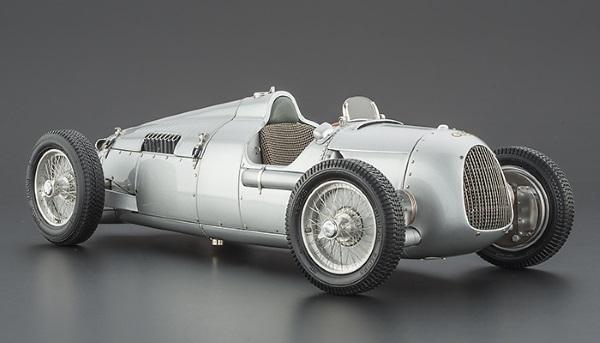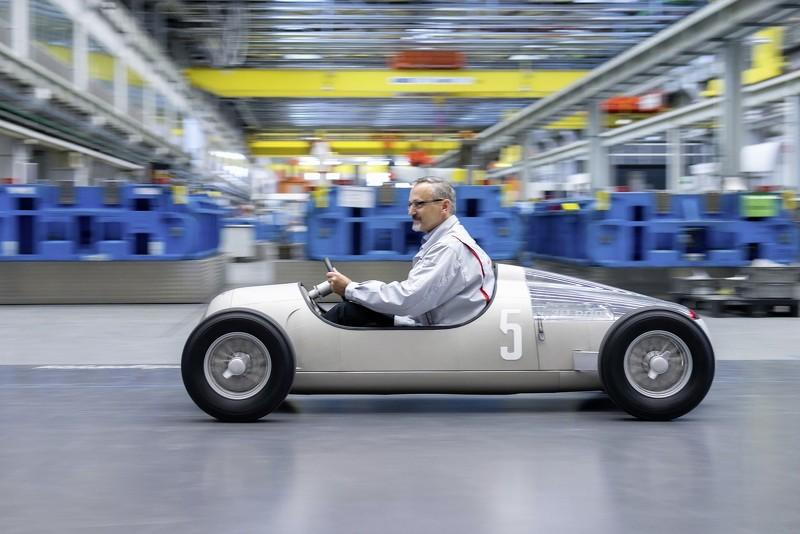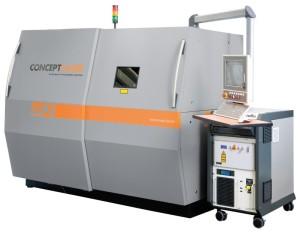To demonstrate their current large-scale metal 3D printing capabilities, Audi Toolmaking used a metal selective laser sintering process to create an accurate replica of their classic Auto Union Typ C Grand Prix car. The race car dates back to 1936, and was one of Europe’s dominant race car designs between 1932 and 1939. After the completion of this project, Audi is now considering more possible applications for this metal part manufacturing process for their own cars, as well as cars made by the entire Volkswagen Group.
 Currently the Volkswagen Group maintains a total of 14 toolmaking facilities where they maintain cooperative partnerships in 9 different countries to enable continued research and development of new manufacturing processes. The focus of the first cooperative venture is the testing and implementation of metallic 3D printing, sand 3D printing and powder bed 3D printing technologies. Using this selective laser sintering (SLS) process to successfully 3D print all of the metal parts used for the fabrication of a 1:2 scale replica of a Silver Arrow model Auto Union Typ C was the first large-scale demonstration of Audi Toolmaking’s metal additive manufacturing capabilities.
Currently the Volkswagen Group maintains a total of 14 toolmaking facilities where they maintain cooperative partnerships in 9 different countries to enable continued research and development of new manufacturing processes. The focus of the first cooperative venture is the testing and implementation of metallic 3D printing, sand 3D printing and powder bed 3D printing technologies. Using this selective laser sintering (SLS) process to successfully 3D print all of the metal parts used for the fabrication of a 1:2 scale replica of a Silver Arrow model Auto Union Typ C was the first large-scale demonstration of Audi Toolmaking’s metal additive manufacturing capabilities.
“We are pushing forward with new manufacturing technologies at Audi Toolmaking and at the Volkswagen Group. Together with partners in the area of research, we are constantly exploring the boundaries of new processes. One of our goals is to apply metal printers in series production,” said Prof. Dr. Hubert Waltl, Audi’s Board of Management Member for Production and Head of Toolmaking at the Volkswagen Group.
The SLS process is one of the most widely used metal 3D printing methods in the industry and works by using a high powered laser to melt individual patterns into a layer of fine powder material. The metal material used for the Auto Union Typ C replica was an extremely fine powder consisting of grains about 15 to 40 thousandths of a millimeter, which works out to about half of the diameter of human hair. The SLS process allows users to produce components with extremely complex geometries that would be virtually impossible to achieve using traditional manufacturing methods.
The Concept Laser M2 Cusing industrial 3D printer that was used to create the race car replica is capable of producing parts and objects about 240 mm (9.4 inches) long and 200 mm (7.8 inches) high. The M2 Cusing is capable of 3D printing powder materials into full metal parts with both aluminum and steel. Not only are the resulting parts fully dense and of end-use quality, but they actually achieve a higher density than components made using traditional die casting or hot forming fabrication processes.
Here is some video about Audi’s use of metal 3D printing technology:
Audi has long favored the aggressive application of new technologies to the production of their vehicles and Audi Toolmaking is widely regarded as a pioneer in the development of these new technologies by the automotive industry not to mention within the entire Volkswagen Group itself. Some of Audi Toolmaking’s innovations include an intelligent tool that helps make sharper and more defined contours in the sheet metal of car bodies. This is done using a series of lasers installed on the tool that accurately measure the positioning of the sheet of metal so activators can take corrective action during the fabrication process as needed. Audi has been an automotive innovator for more than a century and their cars are currently among the best selling luxury vehicles in the entire world.
Discuss this model in the 3D Printed Race Car forum thread on 3DPB.com.
Subscribe to Our Email Newsletter
Stay up-to-date on all the latest news from the 3D printing industry and receive information and offers from third party vendors.
Print Services
Upload your 3D Models and get them printed quickly and efficiently.
You May Also Like
The Dental Additive Manufacturing Market Could Nearly Double by 2033, According to AM Research
According to an AM Research report from 2024, the medical device industry, specifically in dentistry, prosthetics, and audiology, is expected to see significant growth as these segments continue to benefit from...
Heating Up: 3D Systems’ Scott Green Discusses 3D Printing’s Potential in the Data Center Industry
The relentless rise of NVIDIA, the steadily increasing pledges of major private and public investments in national infrastructure projects around the world, and the general cultural obsession with AI have...
AM Research Webinar Explores Continuum’s Sustainable Metal Additive Manufacturing Powders
Metal additive manufacturing (AM) powder supplier Continuum Powders is working to develop solutions that empower industries to reduce waste and optimize their resources. An independent life cycle assessment (LCA) of...
3D Printed Footwear Startup Koobz Lands $7.2M in Seed Round
California-based Koobz is focused on reshoring the U.S. footwear supply chain with advanced manufacturing processes, including 3D printing. The startup just announced that it has added $6 million to its...


































